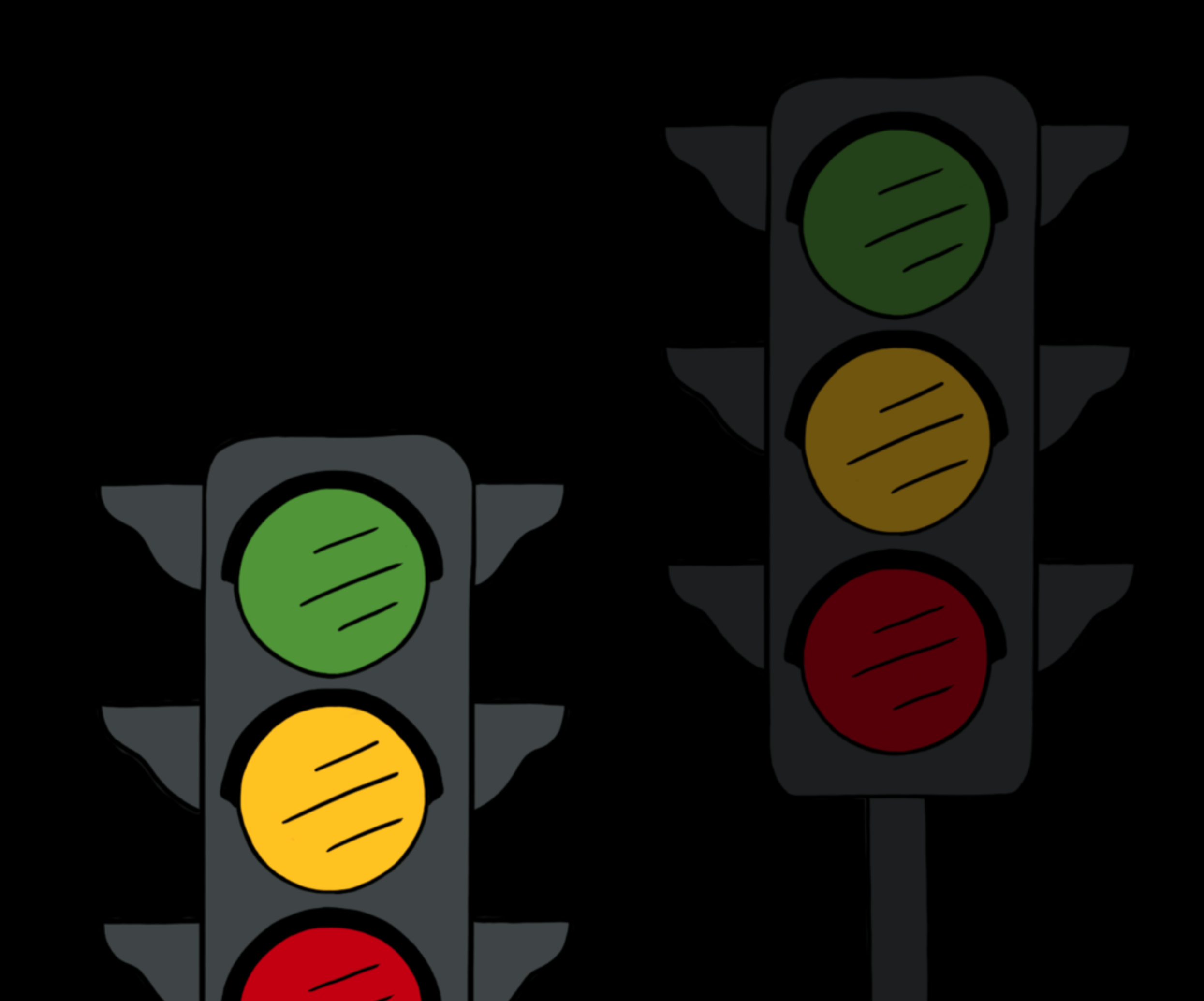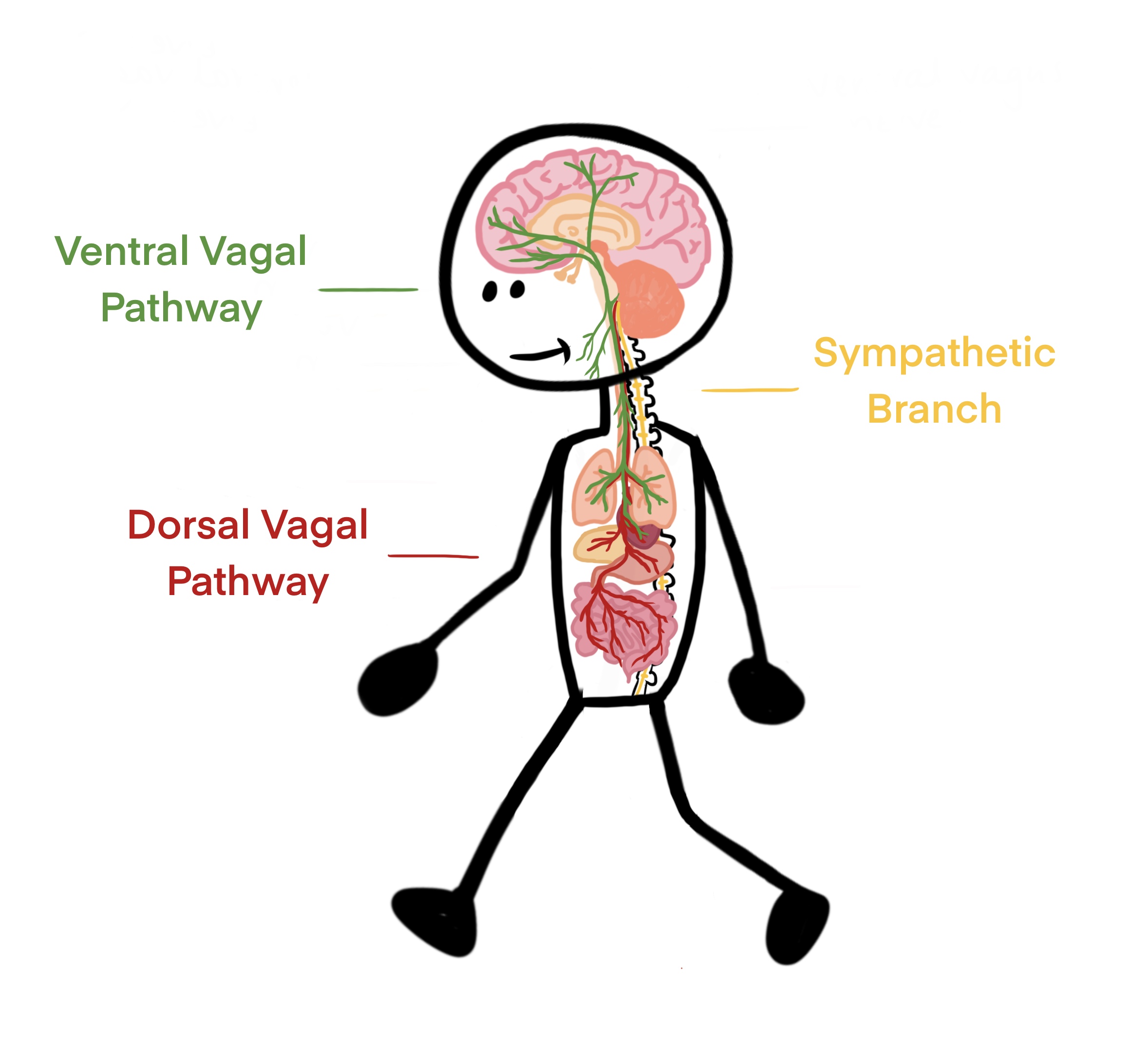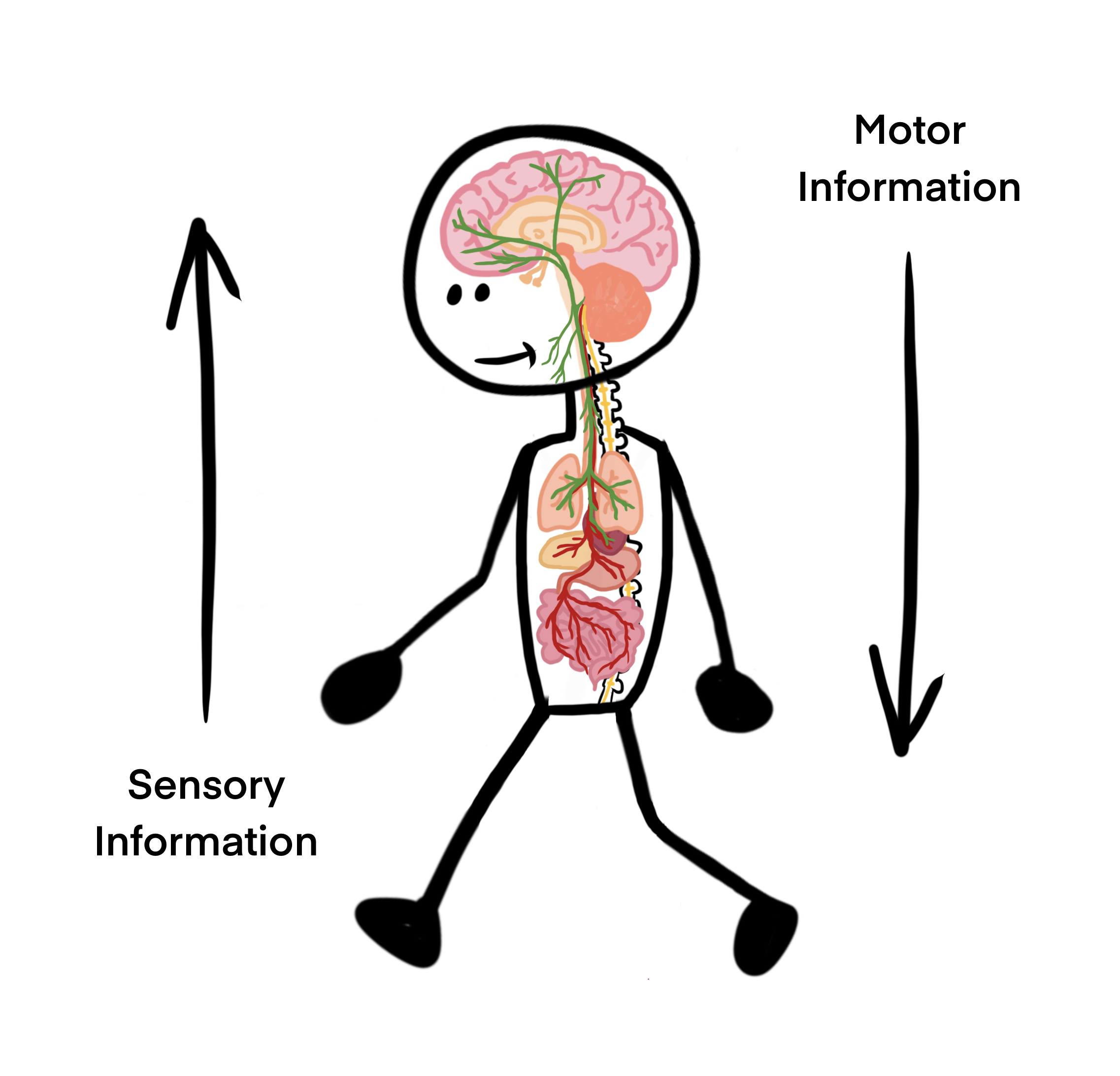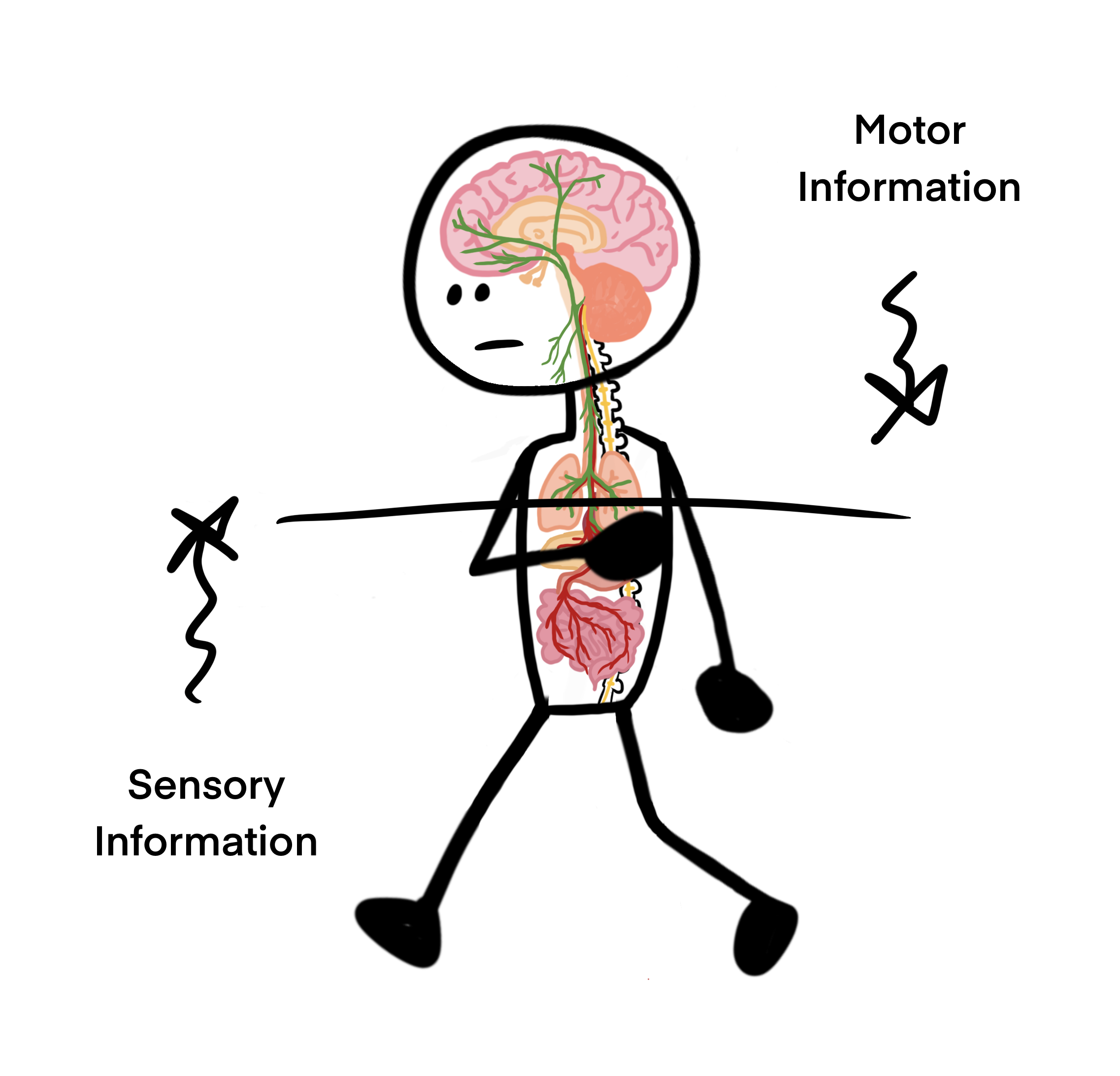
The Vagus Nerve
In our first lesson we talked about how our nervous system scans our environment for signs of safety and danger, and will move into the green, yellow or red zone depending on what it notices. The vagus nerve plays a huge role in this function of the autonomic nervous system - it’s actually where polyvagal theory gets its name from.
This lesson explains what the vagus nerve is, how it affects the functioning of our brain and body, and what this means for us.
What is the vagus nerve

The vagus nerve is the longest cranial nerve in our body - it runs from the brainstem at the base of the skull all the way down to our gut.
When we talk about the ventral vagal and dorsal vagal pathways of the green and red zones, we're talking about the two branches of this vagus nerve. It’s actually like a long conduit of nerves that are all connected to each other, connecting multiple points of our brainstem to the muscles of our face, throat and neck, as well as to our internal organs such as our heart, lungs, and digestive system.
The sympathetic activation of the yellow zone is actually a different pathway that sits along the spinal cord, but is still connected and influenced by the activity of the vagus nerve.
Communicating between brain and body
This nerve acts like a communication system, and this system goes two ways:
It sends motor information from our brain to our body, which changes our body state, and it sends sensory information from our body back to our brain, which changes our internal emotional state.

So it’s kind of like this continuous feedback loop, where depending on what the brain sees, hears, or interprets, it sends this information down to the body to change how we move or function, and then the body sends information back to the brain based on how it's functioning, in order to tell the brain what mood it should be in.
This explains how different nervous system responses can cause different signs and signals in the body - the motor information sent through the vagus nerve changes things like our heart rate, breathing and digestion, and even our immune system and the way we use our muscles, and the body then sends this back as sensory information that changes our thoughts and emotions.
Blocked communication
When we look at how chronic stress affects the vagus nerve, it can actually block its ability to communicate effectively between the gut and the brain. This is part of what causes that nervous system dysregulation.
Without the vagus nerve effectively communicating between our brain and body, we can start to lose our sense of awareness or control over our internal states, and it can make it harder for us to connect back to the green zone.

Our bodies or brains might not be able to tell how we feel or what we need anymore, or can even send us false signals even when there isn't danger present anymore. This could look like chronic digestive issues or chronic pain, and it can affect our thoughts or behaviours or even our perceptions of the world around us.
Many paths to healing
I wanted to share this lesson on the vagus nerve for a few reasons.
Firstly, this is why mental health isn’t just “in our head” - it’s a whole body experience that affects our brain and our physiology, as well as our emotions, thoughts and behaviours.
I hope this can be validating for anyone who has struggled or is struggling with mental health issues or reactions that we may not “want” to have but “can’t help”. It's not you choosing to feel or react this way - it's a nervous system response that happens automatically. It’s important to remember that our bodies have reacted in this way because it was trying to keep us safe, and this was the best way it knew how at the time.
Secondly, while this may all sound a bit overwhelming or like we have no control over any of this, understanding how it works actually gives us many possible avenues for healing.
Because the vagus nerve is connected to so many parts of the body, there are actually many different tools or practices we can use with these parts of the body or brain to help stabilise the nervous system, and we can choose different ones based on which zone we find ourselves in, or what suits our own individual needs.
What’s comforting about this is that even if one of these tools doesn’t work or feel right for you, there are always other options to try. We’ll go into all of this in a lot more depth in the ‘Cope’ section of the course.
Lesson Review
This lesson talked about the vagus nerve - how it's a communication system that connects the brain to different organs and muscles in the body, and is responsible for sending us into the different nervous system zones.
Having this awareness of polyvagal theory and the vagus nerve isn't about giving you even more symptoms to worry about, it's about giving you more awareness of what's going on in your nervous system, as well as access to the things that can help you cope, or heal, when you need it.
For more information, strategies and exercises for regulating the nervous system, check out the 'Cope' section.

